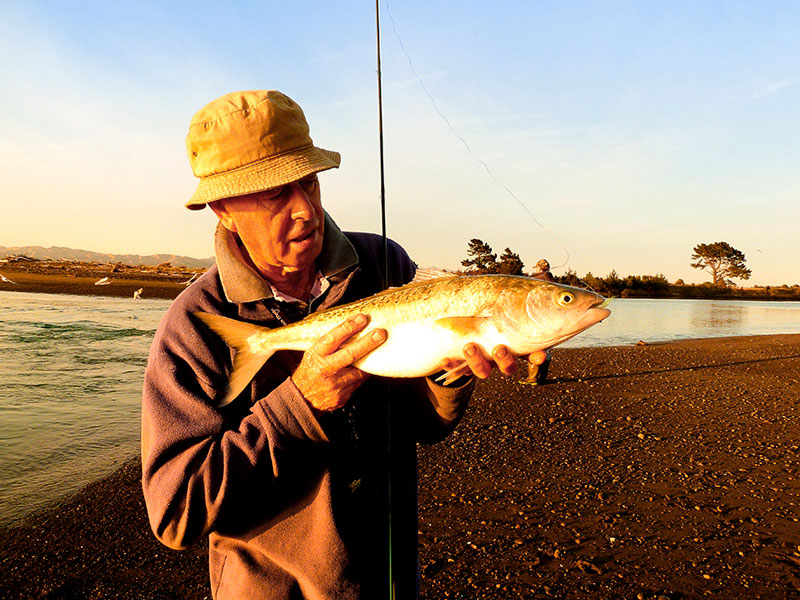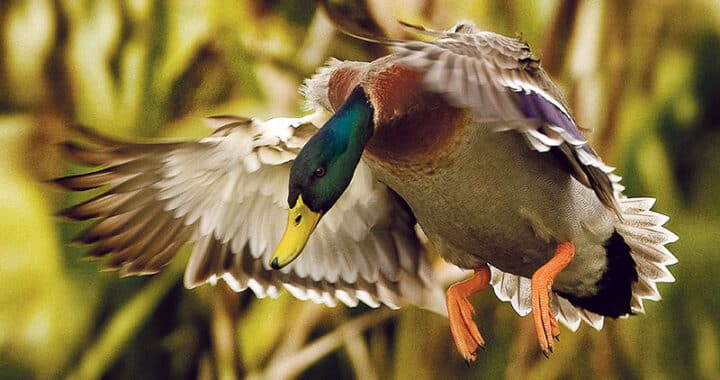Saltwater fly rod sport with kahawai
3 min read
A kahawai on the fly — superb sport and pretty good eating too. Photo: Tony Orman
It’s that time of the year when kahawai come into river mouths, giving great sport to many Kiwi anglers. To the seasoned trout fly fisherman, it’s a chance to get superb sport on a fly rod.
Kahawai is a Maori name, which means ‘brave’ or ‘strong’ (kaha) water (wai). Well named, it reflects the kahawai’s terrific fighting ability. Pound for pound, kilo for kilo; it arguably has no equal.
Locals usually fish at river mouths using spinning or surfcasting reel, but an increasing number have turned to the fly rod usually fishing at river mouths.
At a river mouth, there are a few basic points that I follow, bearing in mind that on some days, there are always exceptions to rules.
I tend to fish the outgoing tide. The reason is the incoming tide is awkward to fish and the odd inevitable rogue wave can leave you wet and buffeted. Besides, it’s also awkward to fish from the angling angle.
In addition, kahawai often enter a river mouth on the rising tide, feed on sprats, and then as high tide is reached, begin to drift back. Many rivers have a lagoon section just inside the mouth with the outlet a narrowing neck as the water flows into the sea. Kahawai will often hold in the neck, just up from the sea and ambush baitfish.
The fly generally seems to out-fish the metal spinning lures primarily due to a more life-like imitation of baitfish, both in action and size.
A favourite fly of mine is the Clouser Minnow, perhaps 2/0, usually with a chartreuse back to it and white underbelly. I use a weight 7 floating line and a graphite rod. With the river’s flow issuing out into the sea, I cast across and swing the Clouser Minnow across and around to below. Usually, I strip relatively quickly. Fish invariably take on the swing.
Kahawai are often voracious feeders but, at times, they can be frustratingly trout-like in feeding. It’s a sporting adage to change tactics when you’re losing whether it be rugby, tennis, cricket, or whatever. The basic adage also applies to fishing and at times even with the usually actively predatory kahawai.
One evening last summer, I found kahawai just following behind the stripped fly, so I slowed the retrieve down and virtually hovered the fly in front of the fish. It paid off.
Landing a kahawai in the waves is a matter of timing things with the surges. Sometimes fly colour can be a factor, too. On more than one occasion, I’ve found a blue instead of chartreuse fly work best.
Change of light, particularly just before and during twilight, is an optimum time. If the half falling tide coincides with evening, that’s ideal.
I usually wear polaroid glasses when fishing kahawai. Occasionally, kahawai will flash at the fly and not take, or they will just follow in after the swinging fly without taking. Polaroids help you to read what’s going on beneath the surface, apart from the added advantage of seeing the fish. The sight of a big kahawai or even two or three, rivalling each other in pursuit of the fly, is exciting stuff.
Hook a kahawai and it’s likely to take off down towards the sea, so palm the reel to avoid whacked knuckles.
Kahawai is sadly a prime example of fisheries mismanagement. The tragedy is that successive New Zealand governments have been and are oblivious to the sporting value not only to Kiwi recreational fishers but also to the visiting fly fisher.
The kahawai is a superb sports fish. Yet, the Government ‘management’ allows corporate purse seiners to plunder kahawai shoals and export them to Australia to be canned and even as lobster pot bait. It’s a low-value commercial fishery.




Good article.
I definitely appreciate this website.
Continue the good work!